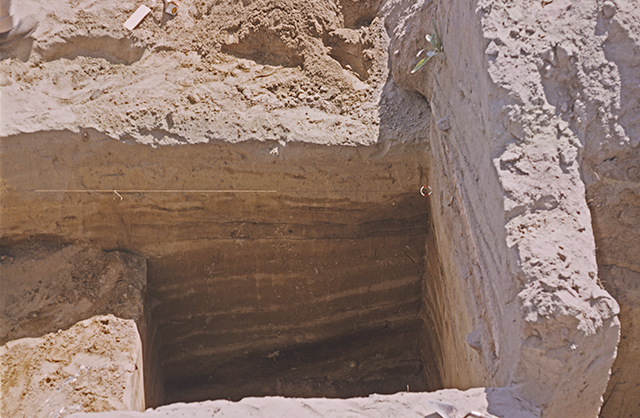
Drawdown Gallery
The Web Pubs
Sunset Creek
by C M Nelson
Reflections
by Jay Miller
The Paper Pubs
Prelim. Report
Sunset Creek
Eratta
Culture Change
Solland Thesis
Supplements
Correspondence
Level bag tools
2014 Drawdown
Proj. Points
Setting
Excavatiions
Field Profiles
Features
Camp Life
Ranching
remains
45KT26
Catalogs
Primary Catalog
Nos 1-400
Nos 401-4813
ID Bone
Level Totals
Artifacts by
level
Artifact
comp catalog
Level Bag
Artifacts
45KT28 ~ Gallery of Excavation Photos |
|||
|
The following photos were taken, primarily by Charles G. Nelson, during the excavation of 45KT28. The width of each image is 640 px, though most are displayed at a width of 390 px. To see the larger image, right click and select "view image".
A page from the notebook of Walter Barke that maps the House Pit 1 depression. The grid is in five foot squares. The larger numbers are elevations calculated from the nearest benchmark (see Fig. 4). Get Walter Barke's field notes for House Pit 1.
|
Conventions Abstract Table of Contents Letters Figures & Tables Acknowledgements Introduction Definitions Setting Cultural Record Introduction Vantage Phase Cold Springs Frenchman Spring Quilomene Bar Cayuse Phase Characteristics Age Ethnography Salishan Stratigraphy Cayuse I Cayuse II Cayuse III Discussion Summation Models for Prehistory Typology Stone Artifacts Flaked Stone Percussion Ground Stone Bone/Antler Tools Shell Artifacts Metal Artifacts Raw Materials Methodology Rockshelters References Cited |
||
























